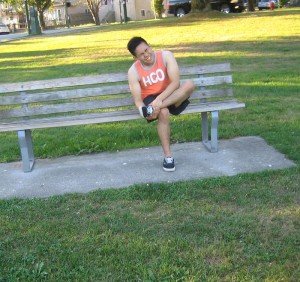A foot stress fracture can slow down even professional athletes. The vital point to the healing of this type of small-sized bone crack is to allow the damaged bone enough time to rest and heal.
Treatments might be non-surgical or surgical and requires proper assessment by the doctor in order to monitor the healing process. Analyzing the factors that contributed to the stress reaction in the damaged foot is vital for effective treatment. Always bear in mind that these factors often relate to the exercise habits and behaviors.
Initial steps

Stress fractures on the foot occur once the demands placed on the feet are more than what the bones can tolerate. This is often triggered by constant impact sports such as running and basketball.
After a foot stress fracture, the treatment includes adequate rest, application of ice, compression and elevation or the RICE method. By resting the affected foot, it will provide the body a chance to repair the damage while the application of ice, wrapping the foot using an elastic bandage and elevation higher than the level of the heart can reduce the swelling and inflammation. The images of the affected foot are taken via an X-ray, magnetic resonance imaging (MRI) or bone scan. These tests reveal the size of the fracture and allow the doctor to determine a suitable treatment plan.
Non-surgical treatment
It might be required to momentarily minimize the pressure on the foot by using crutches as well as wearing a supportive shoe to enable the repair mechanism of the bone to catch up. If possible, high-impact exercises such as running and jumping must be avoided.
Always bear in mind that bone is constantly replacing itself and becomes stronger by bearing additional weight. Once an individual receives an approval from the doctor, he/she can gradually start low-impact exercises such as swimming, biking, weight-bearing activities, cross training and strengthening.
Surgical treatment
Bone injuries typically start as minor stress which is similar to a bruise and can progress to a stress fracture due to repetitive impact. The frequency and magnitude of the impact can affect the size of the fracture while surgery is required to stabilize the bone.
In most cases, this often requires the placement of screws and plates to align the bone for correct healing. The recovery and rehabilitation after surgery might be extensive than the non-surgical treatment and may require several months instead of the usual 6-8 weeks if surgery is not needed.
Rehabilitation
Both non-surgical as well as surgical treatment for foot stress fractures are frequently matched with a rehabilitation program that is comprised of strengthening, stretching and balance exercises along with modifying problematic behaviors.
The strengthening exercises are focused on the foot, hip as well as the ankle, knees and core since feebleness in these areas influence the foot-impact forces. Stretching the leg and hip muscles can help promote better flexibility while balance exercises can improve the overall stability.
It is vital to rest between the exercises to allow continuous bone repair. Other vital factors to promote healing include the use of supportive footwear and proper nutrition including adequate intake of calcium and vitamin D.
Considerations to bear in mind
Certain health conditions that reduce the bone mass can increase the risk for foot stress fractures including nutritional deficiencies, osteoporosis and eating disorders. The treatment for this condition is considered more complex and must be monitored closely by a doctor.
